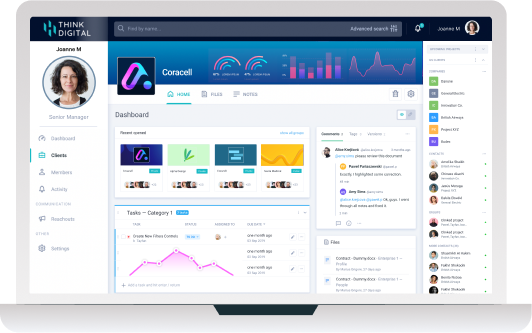The main drawbacks of cloud computing are: downtime, security and privacy concerns, the fact that you have to give up control and flexibility, and vendor lock-in.
Growing businesses often look to the cloud as a way to increase efficiency and save money, but some drawbacks should be considered before making the switch. When considering moving to the cloud, it's important to understand what those drawbacks are and how they might impact your business. In this blog post, we'll take a look at the biggest drawbacks of cloud computing. If you would like to learn about the benefits, please check out our Benefits of Cloud Computing blog.
Downtime
Downtime is one of the biggest drawbacks of cloud computing. When a cloud service provider experiences an outage, its customers can lose access to their data and applications. This can be a major inconvenience, and in some cases, it can even lead to lost productivity or revenue.
There are a few things that can cause cloud outages, including hardware failures, software glitches, and human error. While most cloud providers have implemented safeguards to minimize the impact of these problems, outages can still happen.
One of the best ways to reduce the risk of downtime is to choose a cloud provider that has a good track record of uptime. Additionally, you should make sure that your provider has a robust disaster recovery plan in place in case of an outage.
Security and Privacy
When it comes to cloud computing, security and privacy are two of the biggest drawbacks. While the cloud can offer a lot of advantages, such as flexibility, scalability, and cost savings, these come at a price. Namely, security and privacy are often sacrificed in favor of these other benefits.
That’s not to say that cloud computing is inherently insecure or that your data is necessarily at risk when you use it. But there are certain risks associated with the cloud that you should be aware of. In this article, we’ll take a look at some of the biggest security and privacy concerns around cloud computing and what you can do to mitigate them.
One of the most common security concerns around cloud computing is data breaches. Because cloud-based systems often store a large amount of data in a central location, they can be attractive targets for hackers. If a hacker is able to gain access to the system, they could potentially access a large amount of sensitive data.
Another common security concern is that of insider threats. This is when an employee of the company that owns the cloud-based system uses their access to the system to steal data or commit other malicious acts. This can be especially concerning if the employee has access to sensitive customer data.
Limited Control and Flexibility
As organizations move more of their workloads and data to the cloud, they can quickly feel handcuffed by a common disadvantage of the cloud, a lack of control and flexibility.
While the cloud offers many advantages, such as scalability, pay-as-you-go pricing, and increased collaboration, it also comes with some challenges, chief among them being a loss of control and flexibility.
For companies that are accustomed to having complete control over their on-premises data centers, making the switch to the cloud can be a difficult adjustment. In the cloud, you give up some control over your service provider in exchange for the convenience and scalability that the cloud offers.
This can be a tough pill to swallow for organizations that are used to having full control over their IT infrastructure. But it's important to remember that the cloud is a shared responsibility model. Your service provider is responsible for the security and availability of the cloud platform, while you are responsible for securing and managing your applications and data.
Vendor lock-in
Vendor lock-in can one of the major disadvantages of cloud computing, as it can limit a customer's flexibility and choice when it comes to selecting a cloud provider. In some cases, it may even prevent a customer from moving their data or applications to another cloud platform.
There are several ways that vendor lock-in can occur in the context of cloud computing:
- Proprietary APIs and formats: Many cloud providers offer proprietary APIs that are only compatible with their own products and services. This can make it difficult or impossible to move data or applications to another provider.
- Limited portability: Even if a cloud provider offers open standards-based APIs, there may be limited portability of data and applications between different providers. This can happen if providers use different formats for storing data or if they have incompatible application architectures.
- Contractual restrictions: Some cloud contracts may include clauses that restrict a customer's ability to move to another provider. For example, a contract may require customers to give the provider advance notice before terminating the agreement, or it may stipulate that customer data must be deleted from the provider's systems upon termination.
Even though there are some serious drawbacks, cloud computing is becoming a standard way of keeping your business data safe. If you would like to find out about how you can have your own custom-designed private cloud, check out this page. Also, feel free to contact us for a no-obligation discussion about how Clinked can work for you.
More about Cloud Computing:
- Top Cloud Providers in 2022
- What Is Private Cloud?
- Custom Cloud Solutions
- How To Build a Private Cloud: Step by Step Guide
- Business Cloud: Everything You Need To Know
- Enterprise Cloud Storage: Make The Right Choice
- Cloud Collaboration: Benefits and Tools
- Why is Cloud Collaboration software better than email?
- Private Cloud vs Public Cloud: Crucial Differences
- Private Cloud Pricing: What Are Your Options?
- Most secure cloud storage for private and confidential documents









Let Us Know What You Thought about this Post.
Put your Comment Below.